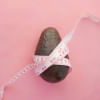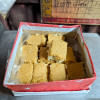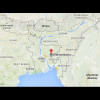When you think of Brahmanbaria, one name that immediately comes to mind is its iconic sweet, chhanamukhi. This small, cube-shaped sweetmeat, with light sugar coatings and soft chhana inside, have been winning hearts for nearly 200 years. Its long history and unique taste make it a treasure of the district.

A taste; a legacy
The oldest shop in the area, Mahadev Mishtanno Bhandar, located at Mahadev Potti, has been making chhanamukhi for almost 180 years. The story begins with Mahadev Panre, the founder of this famous sweet. He moved from Kashi to Kolkata with his brother, Durga Prasad. There, he began working in his brother's sweet shop and quickly became popular.
After his brother's death, Mahadev moved to Brahmanbaria in search of work, where he found shelter at Shibram Modak's sweet shop. When Mahadev arrived, the fame of the shop grew.
Before his passing, Shibram passed the shop to Mahadev. As a Brahman who never married, Mahadev later gave the shop to a nearby temple before his death. Today, four generations later, the shop is managed by Narayan Modak, continuing the legacy.
The secret is in the consistency
The shop's recipe for chhanamukhi has stayed the same throughout the years. It is made with the same care and attention as it was in the beginning. This consistency has helped Mahadev Mishtanno Bhandar retain its reputation as one of the best sweet shops in Brahmanbaria. The shop is surrounded by other confectioneries, many of which are run by the owner's relatives or close acquaintances.
While chhanamukhi is the star of the show, Mahadev Mishtanno Bhandar is also known for other specialities including taaler bora, roshmalai, jafran bhog, rajbhog, and ledikeni — a sweet with its own rich history, though it is no longer available.
Sujit Madan, an employee working at the shop for 25 years, shares, "Chhanamukhi is the best seller here. Our taaler bora and roshmalai are also fan favourites."
Made with milk and mastery
Gopal Sarkar, the skilled moira (the community known for making sweets) who has also been with the shop for 25 years, explains the process of making Chhanamukhi. He explained that the journey starts with fresh milk collected from village farmers.
"To make chhana, we boil pure milk, and about half an hour later, the curdled milk is separated, placed in a cloth, and tightly tied up to remove excess water. Once the chhana hardens, we cut it into pieces and dip them in sugar syrup," Sarkar explains.
One kilogram of chhanamukhi costs Tk 700, which reflects the purity and effort involved. Sarkar adds, "It takes 20 kilograms of milk to produce just 3 kilograms of chhana, which is why the price is high, but what you get is pure as a result."
A taste that defines a town
Mahadev Mishtanno Bhandar is a busy shop, operating from 7 AM to midnight. Despite many shops in the area, this shop continues to stand out as the birthplace of chhanamukhi. Simple yet rich in flavour, it continues to be a timeless favourite, enjoyed by generations. A visit to this iconic shop is a must for anyone wanting to explore the region.
An interesting fact about chhanamukhi is that it has received Geographical Indication (GI) status in 2024, which means it is officially recognised as a special item from the region of Brahmanbaria.








Comments